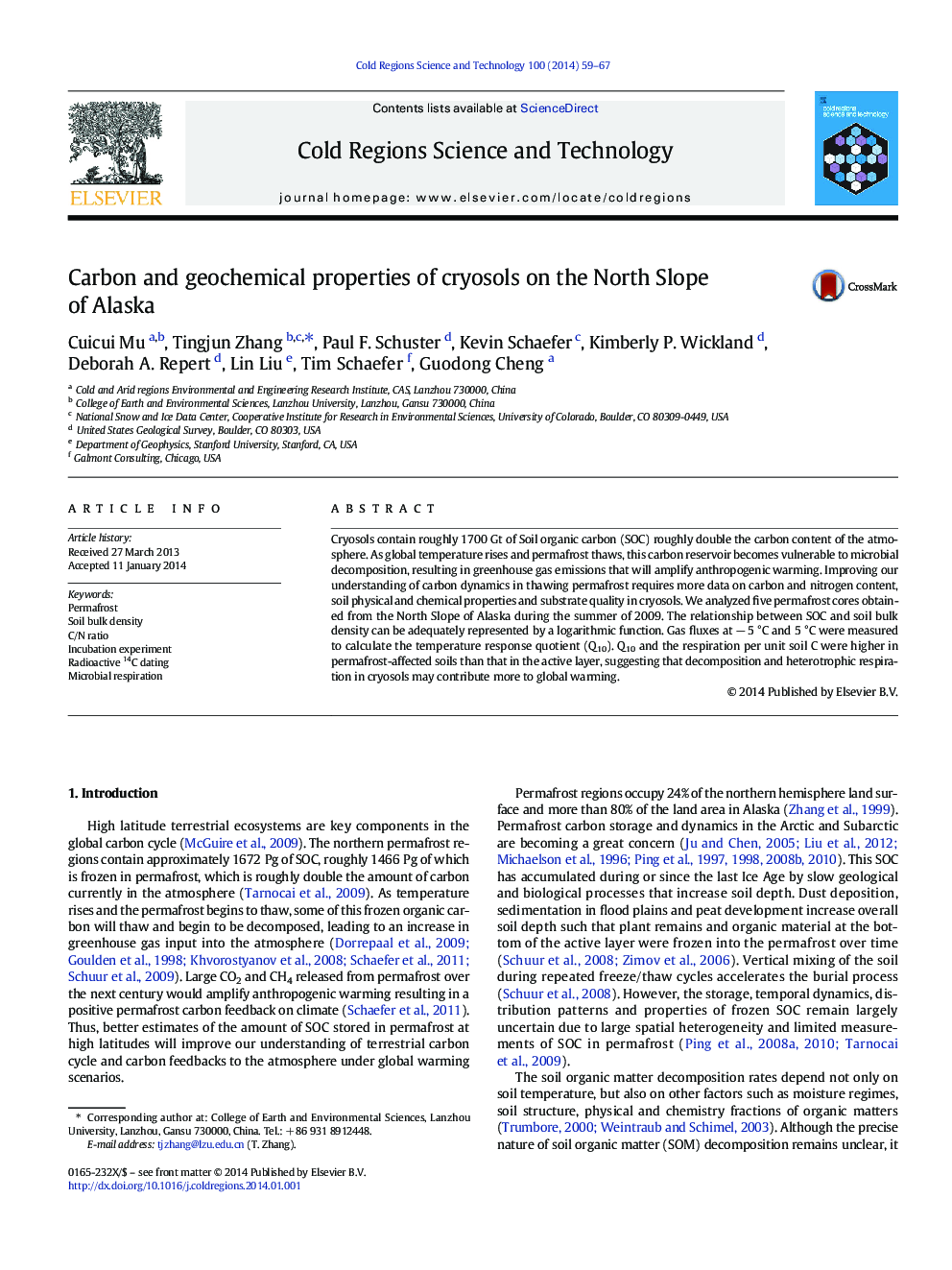| Article ID | Journal | Published Year | Pages | File Type |
|---|---|---|---|---|
| 4675736 | Cold Regions Science and Technology | 2014 | 9 Pages |
•A significant relationship was determined between SOC and bulk density.•SOM at deeper depth was vulnerable to microbial decomposition.•SOM near permafrost table was attributed to redistribution from cryoturbation.•The decomposition rate of older SOM was higher with temperature warming.
Cryosols contain roughly 1700 Gt of Soil organic carbon (SOC) roughly double the carbon content of the atmosphere. As global temperature rises and permafrost thaws, this carbon reservoir becomes vulnerable to microbial decomposition, resulting in greenhouse gas emissions that will amplify anthropogenic warming. Improving our understanding of carbon dynamics in thawing permafrost requires more data on carbon and nitrogen content, soil physical and chemical properties and substrate quality in cryosols. We analyzed five permafrost cores obtained from the North Slope of Alaska during the summer of 2009. The relationship between SOC and soil bulk density can be adequately represented by a logarithmic function. Gas fluxes at − 5 °C and 5 °C were measured to calculate the temperature response quotient (Q10). Q10 and the respiration per unit soil C were higher in permafrost-affected soils than that in the active layer, suggesting that decomposition and heterotrophic respiration in cryosols may contribute more to global warming.
